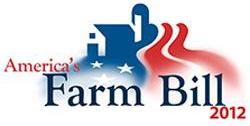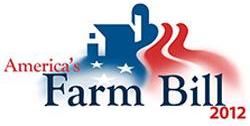I’m going to start this column with where I left off in April talking about dairy policy on Capitol Hill. In that article, I explained that concerning the next Farm Bill, Congress was engaged in a collective game of “kick the can” that could result in changes in farm policy being delayed until 2013. I noted that dairy farmers can’t afford to play that game.
As it turns out, the competition in which farmers really are engaged is akin to a game of financial chicken: they’re collectively careening toward the edge of financial oblivion, in the hope that someone else will stop the game first.
My analogy refers to surging milk production, from New Mexico to the Netherlands to New Zealand, which right now is producing a world-wide tidal wave of milk. There was just the slightest sense of relief when April 2012’s U.S. milk output was only up 3.2% compared to last year; the first quarter of 2012 saw average production increases above 4%. Nevertheless, April was the 27th month in a row that milk production has grown on a year-over-year basis. Cow numbers remain high based on historic patterns; milk output per cow continues to show impressive growth.
Those are the statistics. At the farm level, the hard reality is that we’re up to our udders in milk. Plants are running at full capacity; tanker loads are being dispatched across the country in hopes that someone will buy them at a steep discount. Cooperatives are instituting base plans to rein in output. And, importantly, while exports are absorbing some of the added output, the companies doing the exporting are competing with a similar milk tsunami from our global competitors.
Clearly, supply and demand are imbalanced. Eventually, conditions will correct, due to changes both here at home and abroad. But in the meantime, farmers are once again seeing margins eroded, not just from milk prices, but from high, sustained feed costs. Corn is still in the $6/bushel range for delivery this summer. Alfalfa is being sent to China to feed dairy cattle there. And hard-earned farm equity is again being lost here at home.
There is an alternative to this roller coaster, and it’s what NMPF has been promoting for more than a year: the Dairy Security Act, which will proactively and prudently trim milk output when U.S. dairy farmer margins are stressed, while at the same time providing them margin protection when conditions are poor – as they are right now.
Now, we’ve heard claims, mostly based on anecdotes, that the occasional implementation of the market stabilization program to trim milk output slightly will make the U.S. globally uncompetitive. That assertion is debunked by the recent report on the Dairy Security Act, prepared by Dr. Scott Brown of the University of Missouri for Congress. He found that milk production growth in the years 2012-2022 slows just slightly, with production of dairy products only 0.2% less, than if the market stabilization program didn’t exist.
In fact, what will really make the U.S. uncompetitive is a dairy producer community that has been so shell-shocked by booms and busts that it cannot make investments in the future. The DSA gives farmers tools they badly need to help manage their price risk, and it complements, not conflicts with, existing, private-sector risk management tools. It is this same farmer community that currently invests in new plant capacity, the funding of the U.S. Dairy Export Council, and the voluntary backing of Cooperatives Working Together, all of which together are what has helped boost our exports to 13% of current production.
But these investments can’t be sustained without a better safety net. Consumer markets, here in America as well as abroad, can’t magically absorb all this milk during times like these. What we need is a mechanism to put the brakes on, and stop the rush to the abyss before it’s too late.
As NMPF’s Chairman, Randy Mooney, has said: “Whenever we have growing demand for products in the world, dairy farmers in the U.S. can supply that product, but we have to do it profitability. And if we can’t do it profitably, we’re not going to do it. The market stabilization program allows us to adjust our supply to get back to profitability, so we can feed the world.”
That’s the game we need to be playing, but we can only change those rules by passing the Dairy Security Act.

 Expert Review of Dairy Security Act Finds Little Impact on Consumers, Exporters
Expert Review of Dairy Security Act Finds Little Impact on Consumers, Exporters NMPF Working with Ag Committee Leaders to Expedite Vote in Senate
NMPF Working with Ag Committee Leaders to Expedite Vote in Senate WASHINGTON, DC – The Senate Agriculture Committee today approved a farm bill draft that contains critically-needed improvements in dairy programs, according to the National Milk Producers Federation (NMPF). The bill passed by a vote of 16 to 5, and now will proceed to the full Senate for consideration.
WASHINGTON, DC – The Senate Agriculture Committee today approved a farm bill draft that contains critically-needed improvements in dairy programs, according to the National Milk Producers Federation (NMPF). The bill passed by a vote of 16 to 5, and now will proceed to the full Senate for consideration.



